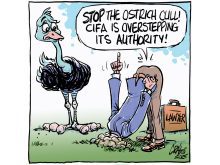Health Canada is likely going forward soon with a policy requiring front-of-package nutrition symbols on foods high in saturated fat, sugars and sodium.
It should provide clear labels, but one part of the plan is a head scratcher.
Health Canada intends to apply the new rules so that prepared food or processed foods, and foods intended solely for children one to four years old, would have thresholds for labels of 15 percent daily values, or DV. This means that if a product’s serving exceeds 15 percent of the maximum daily allowance for saturated fat, sugar or sodium, a label will be predominantly placed on the package. For pre-packaged meals and dishes, the threshold is 30 percent.
Read Also

Budget seen as fairly solid, but worrying cracks appear
The reaction from the agriculture industry to prime minister Mark Carney’s first budget handed down November 4th has been largely positive.
On the face of it, the policy appears to make sense. It’s hard to argue against more clarity, more transparency, and as a result, better consumer health.
But things get murky when we look at the list of exemptions. Exemptions include products at farmers markets, products not sold directly to consumers, non-processed raw single-ingredient meat and fish products, all dairy products, and eggs. The list includes technical, practical, and health-related exemptions, with 16 categories in total.
What’s surprising though, is that both ground beef and pork are not exempt. That’s right. This means that in a few months, ground beef and pork, two unprocessed, natural, and affordable animal protein sources, which many consumers eat every day, will be labelled as having too much saturated fat.
Meanwhile, dairy products, which arguably contain at least as much saturated fat, are exempt.
Some sources believe the powerful dairy lobby provided enough scientific data to Health Canada to suggest that saturated fats found in dairy products are different and healthier.
That may be the case, but Health Canada certainly has some explaining to do, considering how it butchered dairy products with the latest food guide, released a few years ago. The lack of consistency is mind-blowing.
In addition, both beef and pork do exceed thresholds set by Health Canada when products are raw, not cooked. However, few will eat these products raw. When cooked, saturated fat levels are normally below the Health Canada threshold.
What is critical here is protein affordability. While retail prices for beef and pork specialty cuts have skyrocketed in recent years, both ground beef and pork have been relatively affordable. In fact, almost 50 percent of beef consumed in Canada is ground beef. Still, Health Canada intends to slap a warning label on these products, which are consumed by more than 90 percent of Canadians, while our food inflation rate is at about 10 percent.
Discriminating against these two products despite exemptions permitted for other products is likely driven by elitist nutritional ideologies fostered by out-of-touch bureaucrats.
As we try to figure out how to lead healthier lifestyles, warning Canadians that these unprocessed food staples are now dangerous to their health doesn’t make sense. Dietary recommendations, like most things, should be applied in moderation.
Many other countries with similar labelling regulations have not required single-ingredient products to have warning labels.
At the core of the policy is the intent to help consumers make better, healthier choices at the grocery store, particularly when processed foods are involved. Requiring ground beef and pork to be labelled suggests that the spirit of the policy got lost.
In essence, Health Canada is purposefully aiming at two important Canadian food staples that people have eaten for centuries. Such a move makes no sense. These products simply need to be exempt from new front-of-package labelling rules.
Sylvain Charlebois is senior director of the agri-food analytics lab and a professor in food distribution and policy at Dalhousie University. This article first appeared on the Troy Media website. It has been edited for length.















